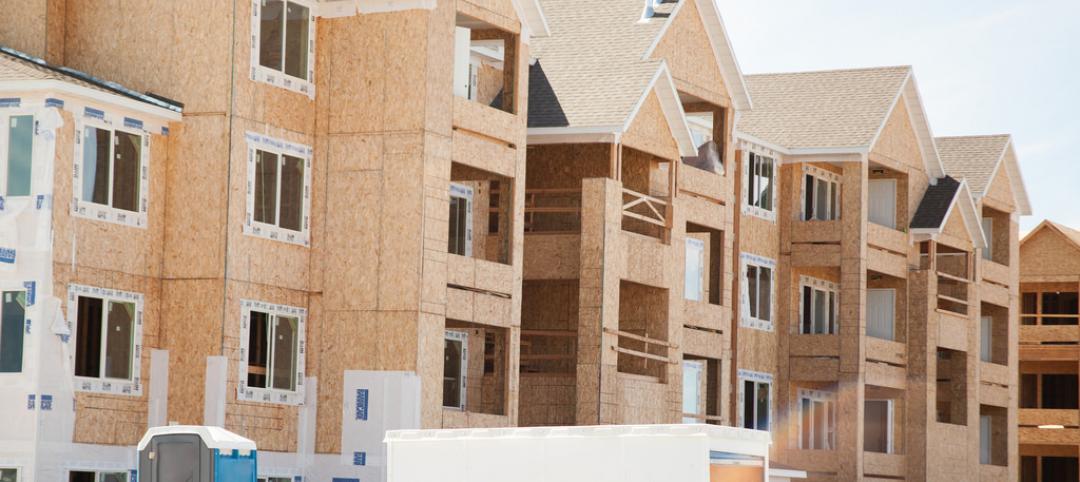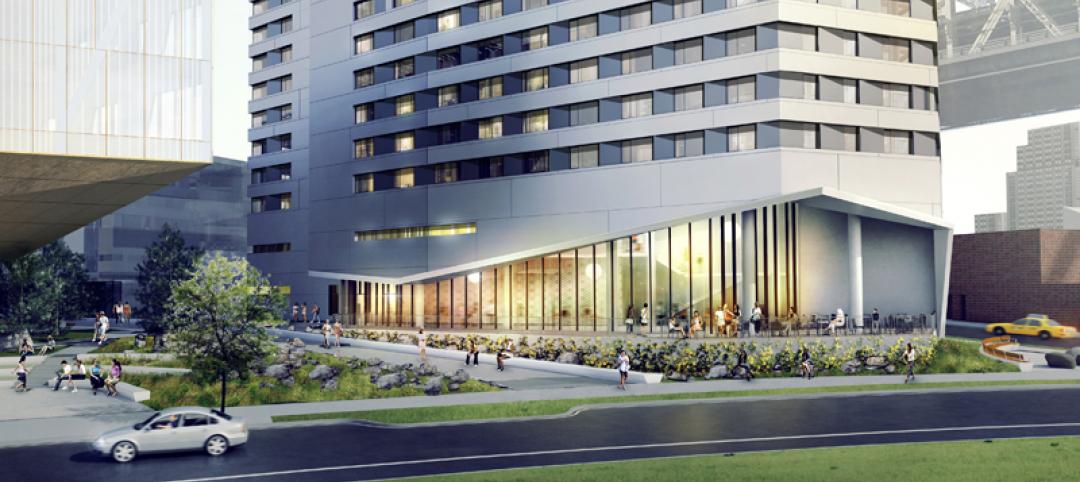Cities and suburbs all over the country face the same problem: not enough affordable housing for their own police, firefighters, EMTs, teachers, and lower-level administrative staff in schools and government agencies. C. Kat Grimsley, PhD, has a suggestion: If your school district is building a new school, build housing in the air space above it and put lower-paid public employees at the front of the line to live there, at subsidized rental rates.
Grimsley, who directs the master’s in real estate program at George Mason University, won a competition for best paper from RCLCO Real Estate Advisors for this idea. She tested her theory out using the third-largest school district in Virginia, Loudoun County, where the Area Median Income is $134,464, but where there’s a need for 10,000 affordable rental units for families.
Her scheme envisions a three-story concrete school at the base topped by a three-story wood-framed apartment building. (Such a configuration would meet most local fire codes for wood buildings.) This could yield 42 one-bedroom units (for, say, young single teachers or EMTs making almost nothing), and six each of two- and three-bedroom apartments for families, for a total of 54. The mix could be juggled depending on local needs.
There's a lot to like about this idea. First, land costs for the residential structure would go down to zero, or there could be some cost sharing with the school district. But still a bargain. The school district would already be paying to bring in utilities to the site, so that would be another savings for the apartment portion of the project. The scheme would also step around the “taking issue,” since any land that the school district acquired through eminent domain would be primarily for a public purpose (building the school), not a private one.
Parking could be shared. The school would get use of the parking lot from, say, 7 a.m. to 4 p.m. on school days; the residents could use it after 4 and at night.
Teachers could roll out of bed in the morning and take the elevator to school (there would be separate elevators and entrances for the school and residences). Police, firefighters, EMTs, and school maintenance staff could live in the same town where they work, instead of having to live in a more distant town where the housing is more reasonably priced.
Grimsley focused on using her scheme for new school construction, but the real payoff would come with using existing schools. Loudoun County, for example, has more than 90 education facilities for its 81,622 students. Building in the air rights over an active K-6 would be difficult to impossible, of course. But what about that ground-level parking lot? Could it be converted to structured parking (at school district cost) with housing above? That would be a piece of cake for any builder. School districts need to look into their real estate portfolios to see if there’s land on school properties that could be turned into housing.
Sure, Grimsley’s modest proposal needs more work, but something tells me there’s a brilliant idea here. Do you agree? Disagree? Send me your thoughts at the email below.
Related Stories
Multifamily Housing | Jul 20, 2015
At an 18-year high, multifamily construction continues to drive housing sector
Predictions that multifamily housing construction would taper off in 2015 may have underestimated the ongoing demand for this kind of housing, the vast majority of which is being marketed as rentals.
Multifamily Housing | Jul 16, 2015
Minneapolis relaxes parking requirements on new multifamily buildings
The city cut the number of spots required for large developments by half. It also will accept plans with no parking spaces in certain cases.
Codes and Standards | Jul 16, 2015
Berkeley, Calif., adopts balcony inspection program following deadly collapse
Apartment building balconies will be subject to inspections every three years under new regulations adopted following a deadly collapse.
Multifamily Housing | Jul 9, 2015
Melbourne approves Beyoncé inspired skyscraper
The bootylicious tower is composed of 660 apartments and a 160-room hotel at the west end of Melbourne's business district.
Codes and Standards | Jul 8, 2015
California Supreme Court upholds affordable housing requirements
Court cites affordable housing crisis of ‘epic proportions.’
High-rise Construction | Jul 7, 2015
Bjarke Ingels designs Frankfurt skyscraper with a surprise in the middle
Several levels in the center of the 185-meter tower are shifted outward to allow for terraces with city views.
Multifamily Housing | Jul 1, 2015
Baby boomers—not Millennials—will drive demand for apartments long term, according to U.S. Fed study
The volatile U.S. multifamily housing market has returned to pre-recession investment levels, driven largely by Millennials putting off home-buying and settling for rentals, but in the long term it will be baby boomers that will drive the market as they downsize.
High-rise Construction | Jun 23, 2015
The world's best new skyscrapers for 2015
One World Trade Center and Abu Dhabi's Burj Mohammed Bin Rashid Tower are among the four towers named Best Tall Buildings by the Council on Tall Buildings and Urban Habitat.
Multifamily Housing | Jun 22, 2015
MAD Architects unveils first U.S. residential project, in Beverly Hills
The “hillside village” edifice will be covered in drought-tolerant vines and succulents.
High-rise Construction | Jun 15, 2015
Cornell Tech breaks ground on world's first Passive House residential high-rise
To achieve Passive House standards, Cornell Tech Residential will incorporate a number of sustainability-focused design elements. The façade, constructed of a prefabricated metal panel system, acts as a thermally insulated blanket wrapping the building structure.
















